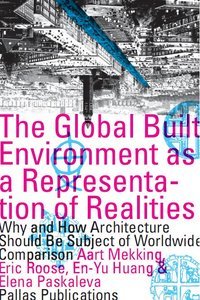
Ebook: The Global Built Environment as a Representation of Realities: Why and How Architecture Should Be the Subject
Author: Aart J.J. Mekking Eric Roos
- Year: 2009
- Publisher: Pallas Publications
- Language: English
- pdf
World architecture as a subject of comparative study is not new. In the first half of the 19th century, western and non-western high cultures were seen as more or less equal, while their forms were compared with each other without significant attention to content, meaning or context. However, with the intensification and institutionalization of the colonisation of the non-western world, the urge developed to see western ethics and aesthetics as superior. Function came to be seen as the only determinant of form, and the contemporary array of supposedly functionally determined building forms in the west came to be established as the inevitably perfect result of an assumed evolutionary development. That one and the same function had undeniably led to diverging forms in different world regions was explained from the distribution over diverging geographical contexts in the course of history. Within these contexts, non-explicated forces would have repeatedly transported their absolute, regional characteristics onto any new building. The empirical field, however, shows that the ever-present dynamics in the combination of form, content and function is not merely steered by regional impulses but often also by non-regional representational needs. Therefore, in this book every part of the built environment, whether western or non-western, is seen as a representation of a certain reality. Because form and content are inextricably connected, every architectural creation should be seen as a new, meaningful combination, in the very specific context of a concrete commission of architectural elements that were already there. This paradigm proves to be an outstanding basis for the comparison of apparently incomparable objects like churches, mosques, Sufi building schemes, multi-ethnic neighbourhoods and Chinese building prescriptions, each of which seems to explicitly represent a new boundary without having felt too conscribed by earlier.
Download the book The Global Built Environment as a Representation of Realities: Why and How Architecture Should Be the Subject for free or read online
Continue reading on any device:

Last viewed books
Related books
{related-news}
Comments (0)